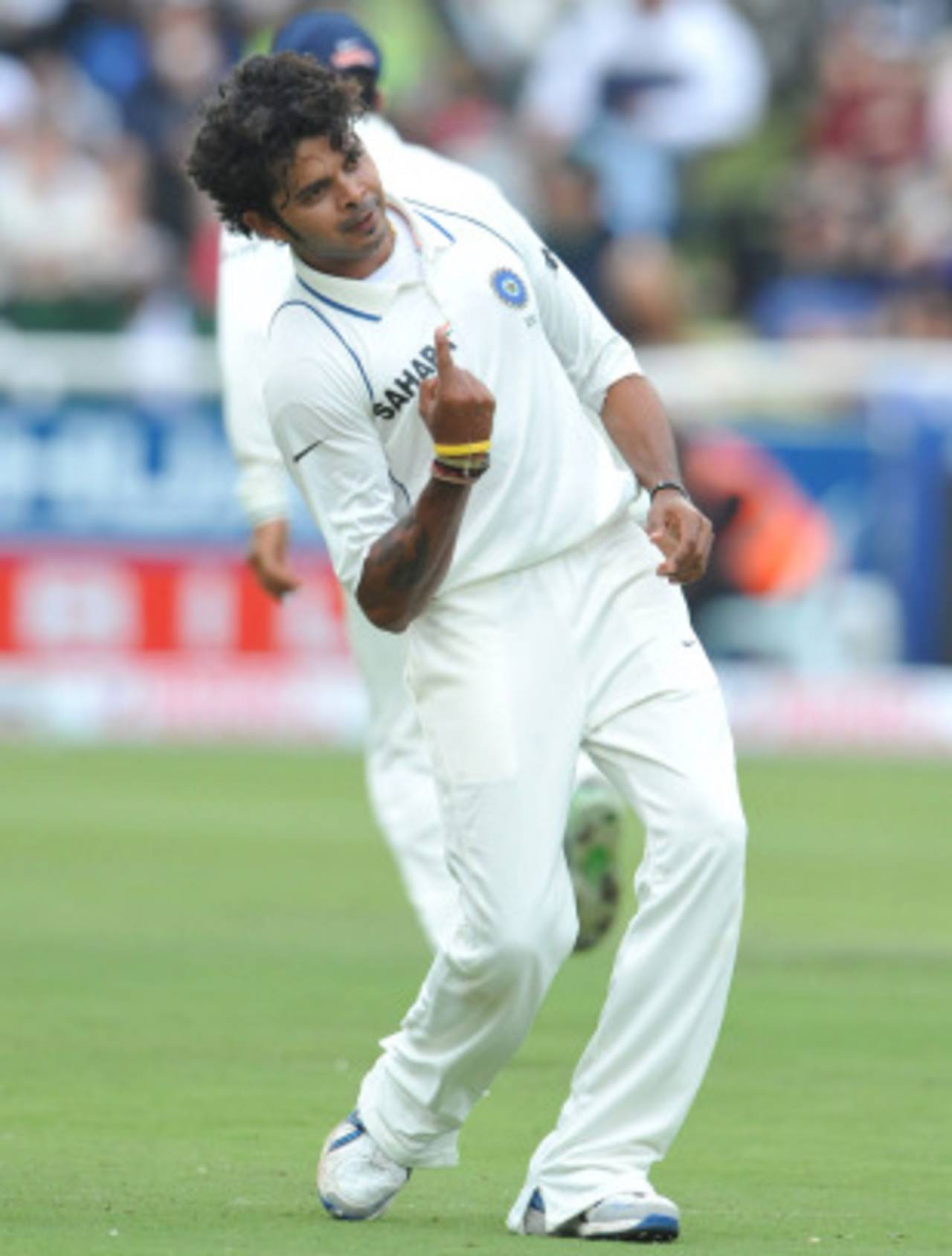Like the weather in Cape Town today, the Indian bowling blew hot and cold, ranging from a start where the relationship between Zaheer Khan and Graeme Smith took another step towards the one between Shane Warne and Daryll Cullinan, to a spell of loose balls that allowed
Hashim Amla to get away to a counterattacking start, to the inexplicable ploy of not trying to take wickets from Harbhajan Singh's end, to
Sreesanth's two good spells in the evening without much reward. In the end, it will be fair to say that India didn't quite capitalise on having won only their second toss in 15 Tests, in conditions where after batting for 110 minutes, Hashim Amla said he would have preferred to be in the field. "The wicket had a lot in it. If you hit a decent length, there was a lot swing and a lot of nip. The ball did get a little wet, but it did quite a bit."
There was a fair bit good about India's bowling today: Zaheer's start, Ishant Sharma's control once Amla and Alviro Petersen threatened to get away, and Sreesanth's movement both ways even after the sun came out. However, the good things about India's bowling didn't quite come together. The drizzle breaks didn't quite help, in that they stalled the momentum, but the batsmen could complain just as much - if not more - about the breaks.
India's 2011 did get off to a great start, with Zaheer causing all sorts of trouble with the new ball, both from over and round the stumps. After the first drizzle break came a spate of overpitched deliveries, and Amla was off. "Just had a lot of bad balls, to be honest," Amla said. "There were quite a few full balls and I capitalised on them, and the momentum was kind of with me." It would have helped if Sreesanth had got off to a good start, but he was lazy by his own admission in the first over, and neutered Zaheer's work to an extent.
"I don't know. Every time you don't get into rhythm," Sreesanth said of his troubles with the first spells throughout this series. "The key is just to get that. I have been struggling a bit, more like I have been bowling well in patches. I want to be more consistent. I'm working on it. It's a learning process for me and I think I'm doing justice to my talent."
Time, though, was not going to wait for Sreesanth to get his rhythm right. As he said, "They were helpful conditions and if I could I would take this atmosphere all around. Those are the best conditions you could bowl in." Ishant then produced the breakthrough with Petersen's wicket, but Sreesanth and Zaheer continued to be loose. Soon after the second break, Amla got five boundaries in four overs without having to go looking for them.
Sreesanth somehow drew a top edge from Amla, and it was perhaps the slow over-rate that took India to Harbhajan. Moreover Zaheer had bowled 15 overs out of the 33 by then - some very good, a few ordinary - and would have needed a break. Harbhajan's economy-rate of close to three an over might suggest a good holding job, but a closer look tells a different story. Almost throughout his 18-over spell, he had a long-on in place, and 29 of the 56 runs off him came in singles. It had to be the over-rate that kept him on for that long, because there wasn't much help for him in the pitch. And when it came to keeping runs down, Ishant was more economical, but bowled two overs fewer on a day that was good for fast bowling. In terms of an attempt to take wickets, those 18 Harbhajan overs were a complete write-off, and it was a surprise that India didn't wait for a single hit over mid-on before sending the man out.
Sreesanth came back with two impressive spells, where he was almost always in the channels that made the batsmen play. He also got the ball to move both ways, beating the outside edge on numerous occasions and also getting inside edges onto the pads. In the first of those spells, he conceded just 11 in five overs for the wicket of AB de Villiers. The second spell of four overs, leading up to stumps, went for just five and was an equal examination for the batsmen. He will have days when he will bowl worse for more success, but there will also be days when bowling short and wide to Amla - as he did to get him out in Durban - will cost him boundaries all day long.
However, India still have a chance to make amends with the new ball becoming due early on the second morning. Sreesanth said he felt in good rhythm. Inda will need all of that, preferably in cohesion with some good bowling from the other end.
Sidharth Monga is an assistant editor at Cricinfo
